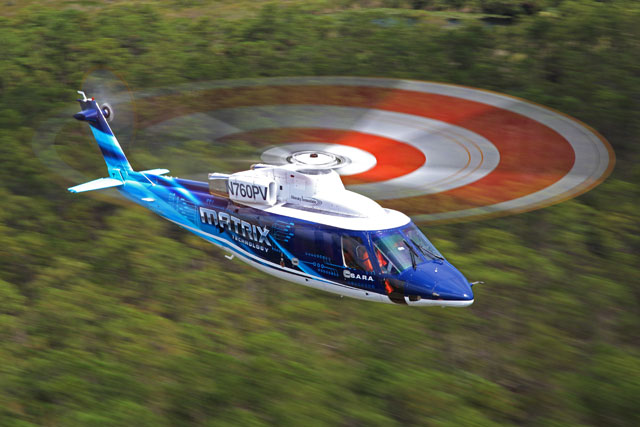Sikorsky’s research department has announced that it is developing software and hardware called Matrix intended to “improve significantly the capability, reliability, and safety” of autonomous VTOL aircraft.
Autonomous fixed-wing aircraft are advancing rapidly. Just last month, the Navy’s X-47B, successfully landed on an aircraft carrier without the help of a human pilot—a notable achievement considering aircraft carrier landings are arguably a pilot’s most difficult task. But rotorcraft autonomy is advancing more slowly. That’s because while fixed-wing aircraft tend to fly in open air, thousands of feet off the ground, helicopters are more likely to find themselves in the thick of things. They fly low and have to contend with vegetation, rocks and other obstacle-cluttered environments, and bad weather and dust storms.
“It’s a frontier that’s ripe for autonomous technologies, but it hasn’t been done in a way that is robust, with reliability and safety,” Sikorsky’s VP of Research and Engineering Mark Miller tells PopMech.
The company says its Matrix technology research programme will build software platforms that are pilot-optional, meaning they could be used for manned and unmanned aircraft, and which could be implemented across a variety of different vehicles. A key to making VTOL autonomous systems safer and more reliable will be to give them a flexible intelligence, so that if a helicopter UAS is flying a pre-programmed route and runs into turbulence, the system can adapt to the changing conditions. Such systems will eventually be useful for tasks like patrolling a border, shuttling personnel to and from offshore oil rigs, or for sending on search-and-rescue missions that would endanger a pilot or crew members onboard.
More immediately, autonomy systems could serve as pilots’ aides, taking over low-level tasks and making it safer and easier to fly in rough environments and adverse weather. “With the X2 we can get even closer to the ground and fly even faster” than conventional helicopters, says Chris Van Buiten, Sikorsky’s Vice-President for Technology and Innovation. That increased speed increases the challenges a pilot faces in a complex environment. “When the X2 is combined with Matrix technology, it could enable the machine to augment the pilot enough to take full advantage of the X2’s speed and agility,” Van Buiten says.
The company has already begun testing its autonomous technology in an outfitted S-76, which conducted its first flights in late July. The team plans to test it out in the UH60M Black Hawk helicopter this fall, when they’ll demonstrate autonomous cargo pickup and delivery. Next year, the plan is to take Matrix for a flight under brown-out conditions, as well as practice landing on the decks of ships. By the sounds of it, they’ll have autonomous VTOLs catching up to fixed-wing UAS in no time.
Source: Popular Mechanics

